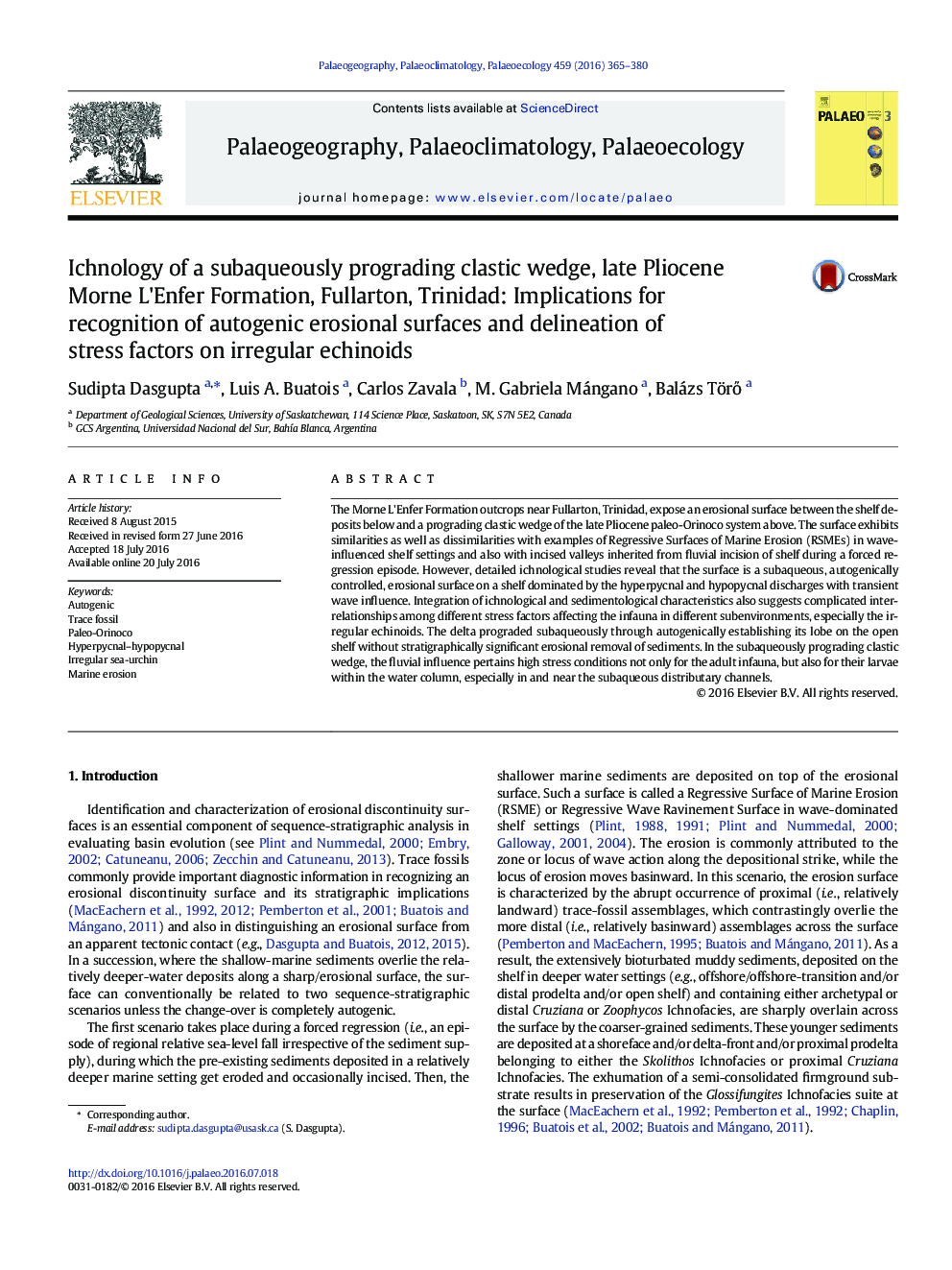| کد مقاله | کد نشریه | سال انتشار | مقاله انگلیسی | نسخه تمام متن |
|---|---|---|---|---|
| 4465642 | 1622132 | 2016 | 16 صفحه PDF | دانلود رایگان |

• Subaqueous progradation of a deltaic clastic wedge
• Autogenic establishment of the clastic wedge on an open shelf
• A regional autogenic erosional surface may deceptively resemble a sequence boundary
• Fluvial influence causes stresses for adult infauna and their planktonic larvae
• Effects of stress factors vary in different subenvironments
The Morne L'Enfer Formation outcrops near Fullarton, Trinidad, expose an erosional surface between the shelf deposits below and a prograding clastic wedge of the late Pliocene paleo-Orinoco system above. The surface exhibits similarities as well as dissimilarities with examples of Regressive Surfaces of Marine Erosion (RSMEs) in wave-influenced shelf settings and also with incised valleys inherited from fluvial incision of shelf during a forced regression episode. However, detailed ichnological studies reveal that the surface is a subaqueous, autogenically controlled, erosional surface on a shelf dominated by the hyperpycnal and hypopycnal discharges with transient wave influence. Integration of ichnological and sedimentological characteristics also suggests complicated interrelationships among different stress factors affecting the infauna in different subenvironments, especially the irregular echinoids. The delta prograded subaqueously through autogenically establishing its lobe on the open shelf without stratigraphically significant erosional removal of sediments. In the subaqueously prograding clastic wedge, the fluvial influence pertains high stress conditions not only for the adult infauna, but also for their larvae within the water column, especially in and near the subaqueous distributary channels.
Journal: Palaeogeography, Palaeoclimatology, Palaeoecology - Volume 459, 1 October 2016, Pages 365–380